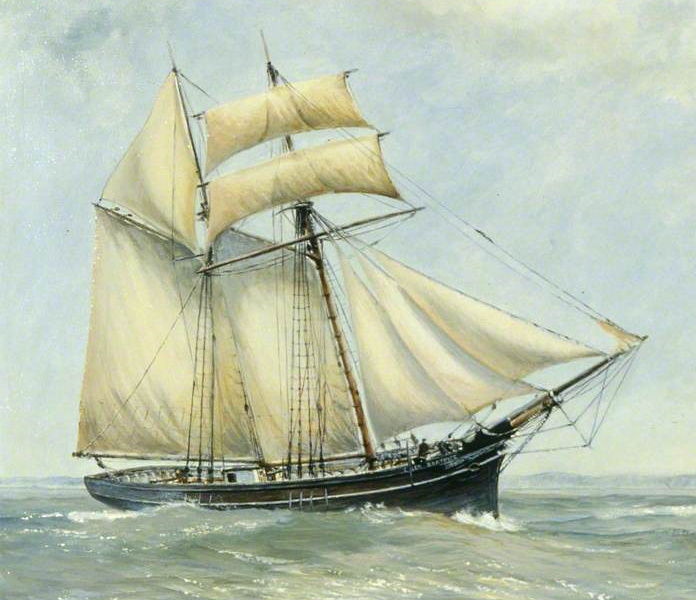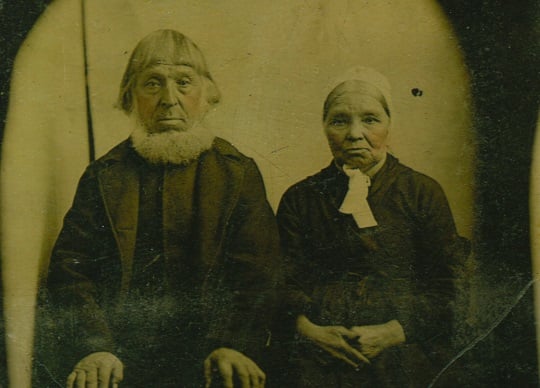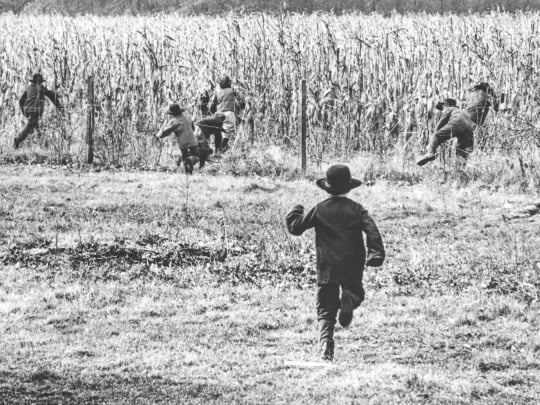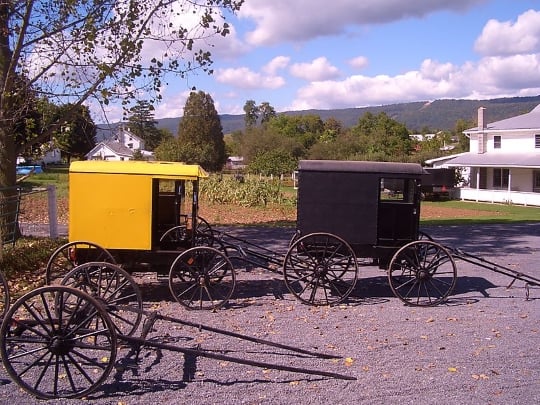5 Important Events in Amish History
 The Amish have been around for over 300 years, with a history spanning both Europe and North America. Here are 5 important events in the story of the Amish.
The Amish have been around for over 300 years, with a history spanning both Europe and North America. Here are 5 important events in the story of the Amish.
Source: Steven Nolt’s A History of the Amish.
Five Landmark Events in Amish History
1. 1693 – Founding of the Amish by Schism
Disagreements over issues including the practice of shunning and frequency of communion led to a schism among Swiss Anabaptists in 1693.
Tensions culminated in elder Jakob Amman excommunicating Hans Reist and other elders who he viewed as too lenient. Despite attempts at reconciliation, the two sides remained separate, with Amman’s followers becoming known as Amish.
Various schisms would occur among the Amish into the 20th century. This has both depleted the overall numbers of Amish, and also led to much diversity within the Amish.
2. 1737 – The Charming Nancy Sails to America
The first known significant group of Amish, 21 families in total, emigrated to North America in 1737 aboard the Charming Nancy. More followed, with the bulk of the Amish coming in two large waves, in the mid-1700s and the early-to-mid-1800s.

Pennsylvania was the destination for those in the first wave, while those in the second group settled mainly outside the state, including in the Midwest and Ontario.
3. 1865 – Traditional and Change-minded Groups Separate
The mid-to-late 1800s was a turbulent period for the Amish. Steven Nolt notes that “the third quarter of the nineteenth century was a time of remarkable disagreement, dissension, and schism among the Amish. While the church was still nominally united in 1850, 25 years later the controversies had produced permanent divisions” (p. 158).
At the time, Amish from both traditional and change-minded factions attempted to resolve differences, including issues related to church Ordnung. One way they did this was by holding Diener-Versammlungen–annual Ministers’ Meetings, with representatives from both sides in attendance. The first was held in 1862, and had some success.

However, Nolt suggests that 1865 can be considered a symbolic year in this division. The meeting that year had its highest attendance, though the conservative side was apparently not received well, and few conservatives attended any further meetings.
4. January 17, 1937 – The End of the Amish in Europe
After around 1850, the Amish population in Europe gradually decreased, due to emigration and assimilation with more progressive Mennonite churches. By the turn of the 20th century, only a handful of European Amish churches remained.
The final congregation of Amish in Europe, at the village of Ixheim in Germany, merged with a Mennonite congregation in 1937, marking the end of the Amish in Europe. However, today there are Beachy Amish groups on the continent.
5. May 15, 1972 – Wisconsin v. Yoder Decision
The Wisconsin v. Yoder Supreme Court case is the highest-profile conflict involving the Amish. In this decision, the Amish were effectively granted the right to remove their children from schooling after the eighth grade, and to operate their own parochial schools.

Wisconsin v. Yoder turned out to be important not only to the Amish and related groups like Old Order Mennonites. The case has also been cited widely in many other religious freedom rulings.
What other noteworthy events could be added to this list?
ship image- Terry F.J. Rogers










Thanks for printing this article, Erik. It is really very interesting.
Thanks, Erik...
Thanks Erik, I enjoyed today’s post.
Amish history
Books have been written on the history of the Amish, yet you were able to condense it into one short page! Good job, Erik! I was most interested in the end of the Amish in Europe.
If you would go back earlier to the 1500s, you could include the beginning of the Anabaptists. If you would add current events, you could include the year you started writing on Amish America! ha!
Very Interesting and enjoyable reading
This is great, thanks Erik and have a blessed day….and a blessed forever! ; )
Glad to hear folks liked this post. I know some might find history boring but I thought these events were both important and pretty interesting.
And Linda I do like the suggestion, I might find the founding date of AA personally important but I don’t quite think it rises to the level of Wisconsin v. Yoder 😉
Charming Nancy
There is a book about the Charming Nancy called Anna’s Crossing by Susan woods Fisher. I recommend this book. Susan writes and puts you right in the thick of things. You feel as though you are right there on the ship with them. Makes you think just what they endured to get here. It starts out slow, I would say maybe the first five chapters but then it picks up speed.
Book "Anna's Crossing"
Happy to see notes on this book. My “Lehman” ancestors arrived in Philadelphia on the “Charming Nancy” on October 1737. When I found this book, but it has been slow going. Your comments have been encouraging and I will stick with it. I thought there should be more names from the passenger list, but then again, the “Lehman” name doesn’t appear on all the list – but we are able to trace them from birth in Switzerland. Thanks, Karen
I guess I didn’t realize there were still Amish in Europe up until 1937 (and now, again, some Beachy Amish). That was an interesting fact!
Where are those Beachy Amish in Europe located, and how many (approx.) are there? Thriving or not so much? This is a topic of interest to me, personally.
Thanks, Erik—this little “fact sheet” almost lends itself to a “pocket guide” of “Fast Amish Facts”!
Alice Mary
Beachy Amish in Europe
Alice Mary,
I read about an Amish buggy in Poland, but it was Poland, New York!
I read about an Amish child in Russia, but it was the town of Russia in New York!
In Europe, there are Beachy Amish in Ireland, Romania, and Ukraine.
http://www.observertoday.com/page/content.detail/id/617059/Driver-on-cell-phone-strikes-Amish-buggy.html?nav=5047 (Driver on cell phone strikes Amish buggy)
“POLAND, NY – Two people were injured Friday after a distracted driver veered into an oncoming lane and destroyed an Amish buggy in Poland.”
http://www.uticaod.com/article/20150909/NEWS/150909374 (Girl, 1, dies after hit by truck)
“A 1-year-old Amish child was pronounced dead Wednesday night after she was struck by a car in the town of Russia,..”
http://www.universitytimes.ie/2014/09/the-irish-amish/ (The Irish Amish)
http://www.irishcentral.com/news/Did-you-know-Ireland-has-an-Amish-community.html (Did you know Ireland has an Amish community?)
http://www.beachyam.org/ministries_MIC.htm (Missions Interest Committee)
http://gameo.org/index.php?title=Beachy_Amish_Mennonite_Fellowship (Beachy Amish Mennonite Fellowship)
Anabaptist Mennonite Church Finder Map:
http://www.pilgrimministry.org/congregations/map
Wisconsin versus Yoder
Wisconsin versus Yoder is one of those issues affecting Amish life that receives very little critical thought. In the century prior to the court ruling, most Amish assimilated into the larger society. Since the ruling, the majority remain Old Order. The ruling also coincides with the first academic portrayals. In fact, the first academic to produce a major work on the Amish testified for the petitioners in the case and is universally recognized as being instrumental in the cases outcome. The implication is that Amish society is shaped and changed by those studying them. David Weaver Zercher in his book, “The Amish in the American Imagination” documents the extent which Hostetler, (the academic) blurred the line between neutral academic and activist.
Dr. Kraybill, in “The Riddle of Amish Culture” writes of how the Amish conflict with modern education was specifically about not wanting to enable their children to think critically. Jonathan Edwards, a commenter on this site has lamented the inability of plain community adherents to think critically.
In actual numbers, the Amish seem to be thriving, but in terms of being a functional, viable, religious movement, is anyone critically thinking about that?
Noteworthy event?
How about the case between the IRS and Valentine Byler in the 1960s concerning Amish paying Social Security tax? That’s an interesting one and seems significant to the Amish life-style! https://web.archive.org/web/20050207065957/http://www.amishnews.com/amisharticles/amishss.htm
A distant ancestor, Christian Berkey (Burgii) and his family came to Pennsylvania aboard the Charming Nancy .
Our arrival
We have family records of arriving in Philadelphia on the ship Adventure on Oct. 2, 1727 from Rotterdam and Spiez, Switzerland.